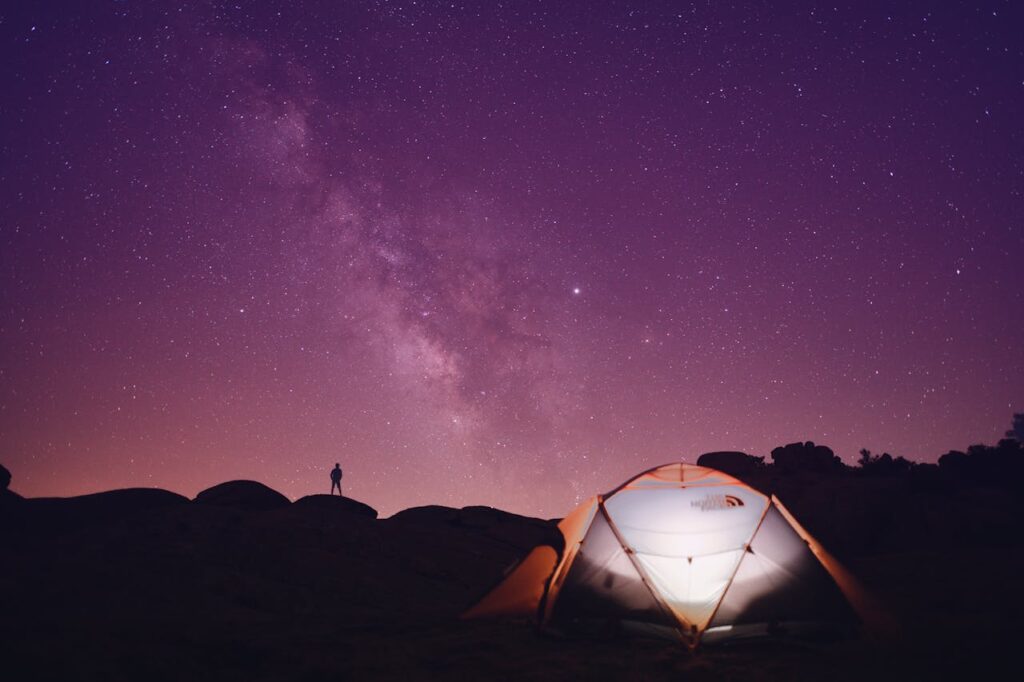When you’re planning to sleep outdoors, a tent is basically your first—and sometimes only—line of comfort. You know, it’s not just a fabric shell; it’s where you’ll rest, store your gear, and hide from the wind or rain. Picking the right one matters more than some people think. I’ve learned the hard way that a tent that’s too small, flimsy, or poorly ventilated can really ruin a trip. So, let’s walk through what makes a good tent, what to look for, and how to choose one without pulling your hair out.

Tent Overview
A tent generally has four main parts: the inner and outer layers, the frame, the floor, and the bag with all the accessories. Beyond that, the design and how it’s supported are equally important—sometimes overlooked, but these details determine how stable your tent will be in wind or snow.
Outer Tent
The outer layer is your first line of defense. Usually made of coated nylon, it’s the one that keeps the rain off your head and the wind at bay. The thickness and texture of the coating decide how waterproof it is. And honestly, not all nylon is equal—some tears easily, some feels cheap.
The inner tent is simpler but still matters. Low-end tents may use basic nylon or mesh, while higher-quality tents use dense, fine mesh. This keeps the bugs out and lets you breathe comfortably, especially on humid nights.
Coatings
PU (polyurethane) is the standard coating on most tents. It’s stable, can handle low temperatures, and is applied to make the fabric waterproof. The effectiveness depends on thickness and how it’s applied.
- PU800: Handles light rain—good for fair-weather camping.
- PU1000–1200: Moderate to heavy rain.
- PU1500+: Most conditions, even some serious storms.
A quick tip: sometimes manufacturers overstate numbers. A PU1000 tent might perform closer to PU500, so always check reviews or test in small rain if you can.
High-end tents sometimes use breathable, high-tech coatings that repel liquid water but let water vapor escape. Still, if it’s humid outside, condensation inside can happen—no coating solves that completely.
Nylon Fabric
Not all nylon is the same. Quality depends on fiber, weave density, dye, and craftsmanship. Fabrics like DuPont’s Cordura are far more durable than standard nylon. Nylon comes in densities like 170T, 190T, 210D, etc. Imported materials are usually better; mid-range tents may use high-quality Korean nylon, which historically outperforms some local brands.
Tent Frames
The poles are the tent’s skeleton. Fiberglass and aluminum alloy are common.
- Fiberglass: Lightweight, flexible, and cheap. Good for mid- or low-end tents. Can withstand moderate wind, but breakage isn’t unheard of. Temporary fixes are possible with tape or a stick, but replacement is needed.
- Aluminum Alloy: Mid- to high-end tents use these. Strong, flexible, lightweight. Premium brands use high-strength alloys like Easton T9. Wind resistance depends on both pole quality and number of pole sets. Two sets of ordinary aluminum might handle level 7–8 winds; three sets around level 9; and high-end 7075 aluminum can reach level 11.
Tent Floor
Your floor touches the ground, so it takes the brunt of rocks, mud, and sticks. PE (polyethylene) is common in cheaper tents, while waterproof polyester or PU-coated fabrics are used in better tents.
Tips:
- Always clear the campsite of hard objects.
- Consider a separate groundsheet (like 420D Oxford fabric) for extra protection.
Packaging and Accessories
Never underestimate these. A flimsy bag or too few stakes can turn an easy setup into a frustrating mess. Aluminum stakes are light and strong, ropes help secure the tent, and a well-sized bag just makes life easier.
Tent Support Methods
- Inner Tent Supported, Outer Tent Draped: Simple and convenient. Common in many casual camping tents.
- Outer Tent Supported, Inner Tent Hung: Better for heavy rain. Keeps inner tent away from the outer layer.
- Single-Pole with Ground Stakes and Ropes: Needs suitable terrain. Not for concrete or rocks. Often used for ridge-style tents.
Beginners might also like instant-open tents—they save time and effort.
How to Choose an Outdoor Tent
Here’s where things get practical. Consider season, altitude, capacity, and purpose:
- Season & Altitude: For spring, summer, fall, and altitudes under 2000m, a PU1000–1500 fiberglass pole tent is fine.
- Solo or Pair Use: Solo traveler? A single-person tent is enough. Two people? Look for a small 2-person tent.
- Capacity & Size: Allow 55–60 cm per person. Example:
- SUNSHINE: 1.4m → 2-person
- E225: 1.65m → 2–3-person
- LD110: 2m → 4-person
Winter or high-altitude? You want aluminum poles and PU1500+ coating.
Tent Selection Principles
- Match tent to use: season, snow, capacity, space, weight, budget.
- Waterproofing vs. breathability: single-layer fully waterproof tents may condense inside.
- Double-layer tents prevent rain seepage and condensation; leave a gap between inner and outer layers.
- Structural support is crucial in snow or windy conditions.
- Lightweight tents should still be roomy and sturdy.
- Two-person tents are the sweet spot; one or three-person options exist.
- Bright colors (yellow, orange, red) improve visibility in emergencies.
- Never cook inside; ventilate if using inner/outer layers for heat.
Tent Buying Tips
- Strong, durable, wind/rain resistant, compact, lightweight, easy to carry.
- High-density nylon or ripstop preferred.
- Dark or silver canopies reflect sunlight and UV; silver keeps summer tents cooler.
- Avoid buying oversized tents unnecessarily.
- Dome or yurt-style tents are flexible, stable, and wind-resistant.
- Double-layer tents help with condensation; vestibules are handy for gear.
- Check poles, stakes, and ropes; ensure everything is complete.
- Elastic aluminum or seamless aluminum poles recommended.
- Double-door tents improve ventilation and accessibility.

Hi, I’m Clara Morgan, and I started this site out of a love for spending time outside—whether it’s backyard gatherings, camping trips, or cozy evenings under the stars. Over the years, I’ve learned that the best memories come from simple, meaningful outdoor experiences rather than expensive vacations or complicated plans.
This website was created to share those experiences and help more people enjoy outdoor living with ease and confidence. Whether you’re a parent searching for safe camping gear, a couple planning a weekend getaway, or someone looking to transform your backyard into a cozy retreat, this site is your go-to resource.
